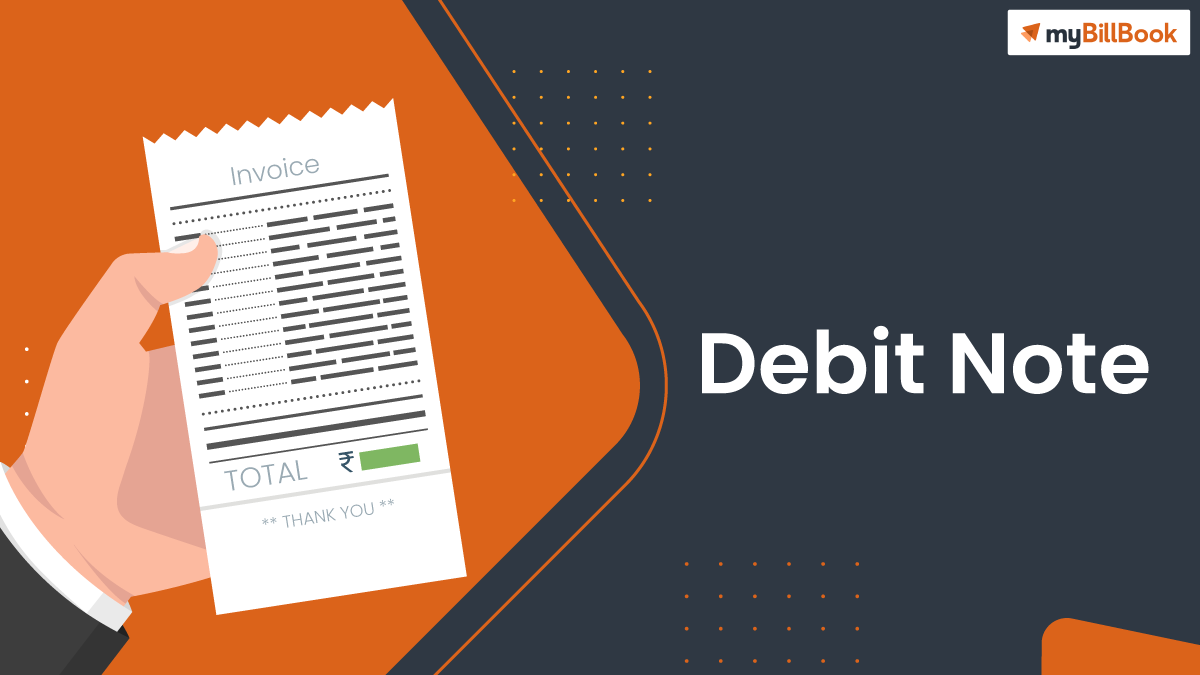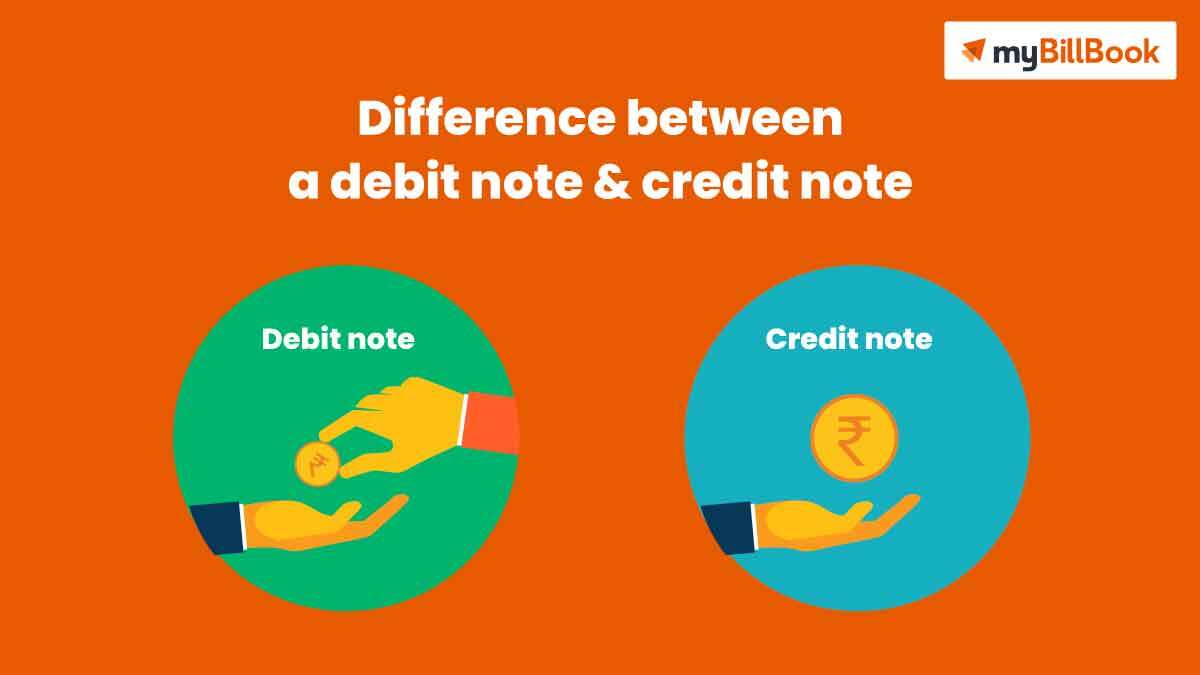What is a Debit Note?
A debit note is a document a seller uses to remind a buyer of existing debt or one that a buyer creates when returning goods lent to them. It might mention a quick payment or serve as a reminder for money that’s currently due.
Understanding Debit Note
A debit memo is another name for a debit note, a common payment method in business-to-business transactions.
Debit notes are not as severe as an invoice, but it’s a gentle reminder that you have some outstanding payments. Real assets may be exchanged during a business transaction, but no real money changes hands until an invoice is given.
It is a document that is used to make changes in the previously issued invoices. The changes may be required for various reasons like errors in the invoice, excess goods supplied, goods returned due to defects or other reasons.
This note can be treated as a credit note with the major difference being that a debit note is issued by the buyer, whereas the credit note is issued by the supplier. It can be issued by the buyer to their seller to indicate or request a return of funds due to damaged, incorrect goods, purchase cancellations or any last-minute specified circumstances. Revisiting what is invoicing can help in understanding the fundamental differences between these documents.
Alternate Forms of Debit Notes
Debit notes can be in letter format or shipping receipts with received goods. It can also be sent as a postcard containing details on paying the debt and pertinent contact information.
Difference between Credit and Debit Note
Credit notes are used to record money that you owe a client as compared to debit notes, which are used to record money that a client owes you.
A credit note is issued when a sales return occurs and decreases payables, whereas a debit note is issued when a purchase return occurs and decreases receivables.
Debit Note Examples
Let’s say, Master & Sons has purchased goods worth Rs 2,00,000 from Kala Roopam Wholesalers and Retailers. Masters & Sons find out that 2% of the total goods purchased are damaged or defective, not fit to sell. At this point, Masters & Sons will issue a debit note in their books of accounts.
The accounting entry for Master & Sons will be
Purchase A/C… Dr 2,00,000 –
To Kala Roopman Wholesalers and Retailers A/C… – 2,00,000
Since 2% of the goods are defective, the debit note entry will then be
Kala Roopman Wholesalers and Retailers A/C……Dr 4,000 –
To Purchase A/C – 4,000
Purchase A/C…….Dr – 4,000
To Purchase Return A/C – 4,000
2% of INR 2,00,000 is Rs 4,000
Doing this will create the right effect in ledgers, and as a result, the business will be able to enter a similar impact on the final accounts and balance sheet as well.
When Debit Note is issued
It is usually raised on two occasions.
- The first one being, there can be a change in the value of goods after the goods have been delivered by the supplier and the invoice has been raised. The reason for this could be a change in the goods due to damaged goods or returned products, bad quality of goods, etc. Whatever the reason may be, in this scenario the amount of the invoice has to be reduced as a few goods are being returned. The debit note will provide a reason for the debit and the amount of money debited from the seller’s account. As mentioned in the example given above. It means that the purchaser has to pay the supplier the amount minus the debit note amount. Thus, this note reduces liability for the purchaser.
- The second situation is when the amount payable by the purchaser increases than the amount mentioned on the invoice raised. This situation could arise due to an incorrect value in the invoice, or the purchaser buying more products at a later date etc. In such a situation, the seller then creates a debit note and issues it to the buyer. The purchaser now has an accounting liability to pay more than what is mentioned on the invoice.
According to GST law, it can be issued under two circumstances. That being:
a. If the tax on the goods or services supplied changes after the issuance of invoice
b. If the taxable value of the goods or services supplied changes after issuance of invoice
Debit Note format and the details to be covered
A debit note format can be made on MS Excel, MS Word or even PDF. But with the rise in technology and ease of using phones and smartphones, one can even make it on their phone. Irrespective of where you issue this note from there is a certain format that needs to be followed for the ease of transactions and accounting purposes. There are only a few minor difference in the format between a credit note and a debit note.
One needs to ensure they follow the GST guidelines while issuing a debit note. The following are the details that need to be covered in it:
- Header: Mention that the document is a debit note.
- Serial Number: Provide a different and unique serial number for each debit note. Also ensure that it is only in 16 characters and not more. The serial number can contain alphabets, numerical and special characters like dash, a hyphen, etc.
- Date: The date when it is issued.
- Invoice Details: Add the invoice number and invoice details for reference and less confusion and the date of issue.
- Supplier Details: Name, address, and GST number of the supplier.
- Contact Details: Add the contact details of the supplier and also their GSTIN
- Amount: The taxable value of goods or services, rate of tax, and the amount of the tax credited or, debited to the recipient.
- Verification: Signature or digital signature of the supplier or their authorised representative
Debit Note in GST
There are certain scenarios when the supplier issues this note. These scenarios are:
1) When a tax invoice is issued, but the taxable value mentioned in the invoice is lesser than the actual taxable value
2) When a tax invoice is issued and the tax that has been charged is less than the actual amount of tax that is to be paid.
In these cases, the supplier sends out a debit note to the buyer along with a supplementary invoice.
How to adjust tax liability in case of a Debit Note
In the new tax filing system under GST, the biggest advantage of it is that debit note can be filed and integrated within the same table that declares outward supplies. No separate filing is required for this. There is no separate invoice declaration.
FAQS on Debit Note
Who can issue debit note?
A debit note can only be issued by the registered buyer under GST.
Is there a specific time when a debit note can be issued?
No. A debit note can be issued anytime in the same financial year as the accounting of the business
Do debit notes require separate tax filing?
No. It can be integrated with outward supplies and do not need a separate invoice declaration.
What is the difference between a debit and a credit note?
A debit note is issued by the buyer whereas a credit note is issued by the supplier
Debit notes are also known as?
Many businesses also refer to them as debit memos or debit receipts.
Till when can a buyer or tax payer issue a debit note or a supplementary invoice?
A supplementary invoice should be raised within the first 30 days since the original invoice is sent to the buyer.
How frequently should you update your debit notes in the GST portal?
All such notes should be uploaded on the GSTIN Portal on a monthly basis. If your cumulative supplementary invoice value is not exceeding Rs. 1,50,000, it can be done in the form of a consolidated invoice.
When should you declare your debit notes?
It should either be declared in the month of September of the following of the year from when the shipment was received along with the original invoice. Or, on the date when you are filing the annual return. It should be done on whichever date comes earlier.
Is a debit note and a revised invoice the same?
No, it is sent when the buyer wants to return the goods to the seller and a revised invoice is raised when there is an issue with the invoice itself
Is the debit note the same as the invoice?
It is different from an invoice and only alerts customers about current debt obligations.
Who prepares debit notes?
A seller issues a debit note to alert a buyer of existing outstanding debt.
What is a journal entry for a debit note?
A debit note is a simple way to keep track of money owed. The person who owes the money is debited, and the account to which the money is owed is credited.
Is the debit note the same as the purchase return?
A debit note is a type of purchase return that happens when the amount reflected is positive.







